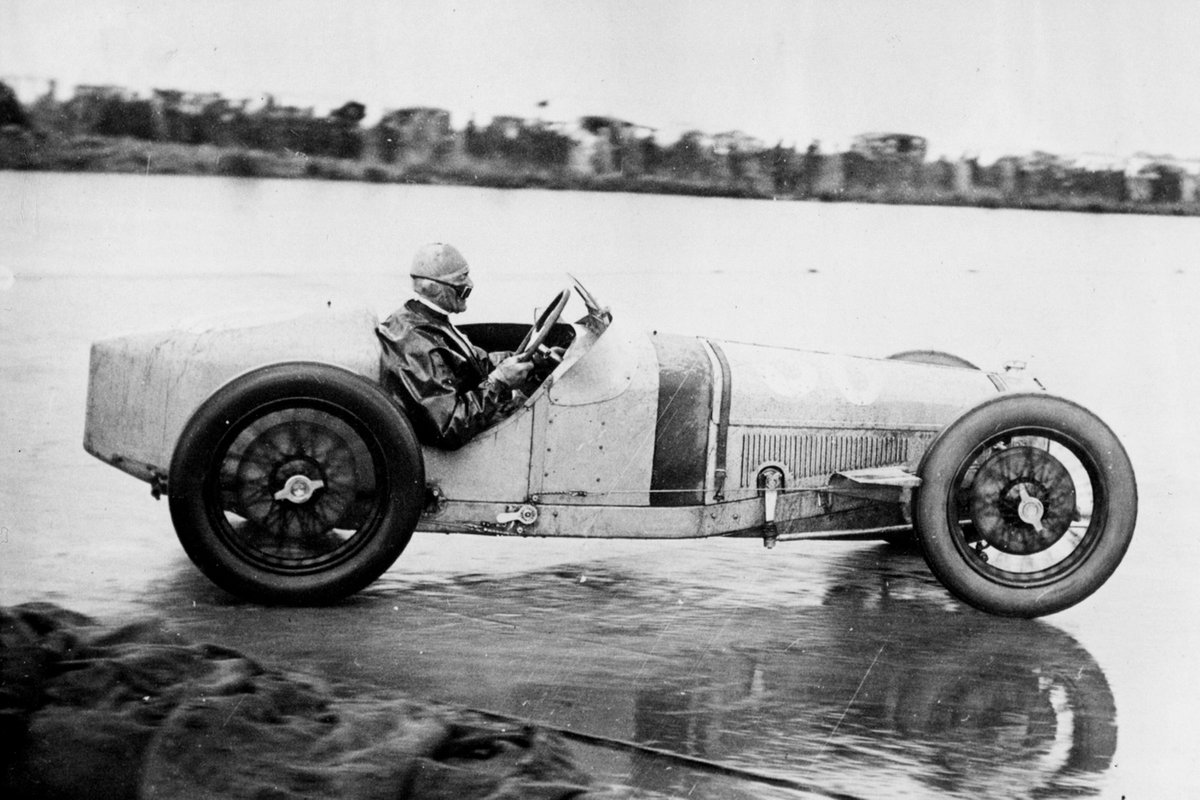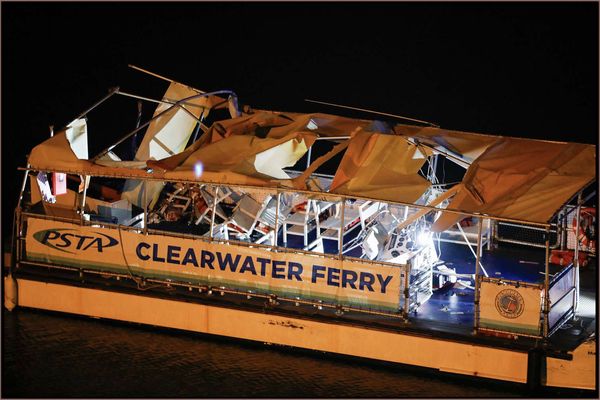
Grand prix racing had been around for nearly half a century before the arrival of Formula 1. The inaugural world championship in 1950 is often used as a starting point, but there had been plenty of brilliant machines and epic races already.
The rules were modified regularly from the inaugural French GP in 1906 to the outbreak of the Second World War. It was a period of huge change and innovation, creating a wide variety of eclectic machines – and some milestone ones.
For this list, we’ve considered the success of each car that competed in major GP events between 1906 and 1939, and the impact they had on motorsport.
10. Delage Type 15 S8

Years: 1926-27
Major success: 1927 world title
Key driver: Robert Benoist
There were various regulations prior to the arrival of the famous 750kg weight formula in 1934 and one of those was a 1500cc engine limit for 1926-27. Albert Lory’s exquisite Delage straight-eight Type 15 was undoubtedly the car of the era, but minimal opposition means it can’t climb higher on this list.
Teething problems, including extreme cockpit heat, were addressed following outings in 1926 and the Type 15 was ready for the following season. Delage’s lead driver Robert Benoist won four of the five qualifying races for the short-lived World Manufacturers’ Championship, including the French GP, easily giving the financially troubled firm the 1927 title.
Key to the car’s success was its expensive powerplant, which featured a nickel-chromium crankshaft and nine roller bearings, producing 170bhp at 8000rpm, a high engine speed for the time. “The Delages were masterpieces of design and construction,” wrote George Monkhouse in his 1950 book Grand Prix Racing. “They were extremely reliable and ran like sewing machines.”
Although not strictly top-level GP events, the 1936 Voiturette successes scored by Richard Seaman in his modified and lightened 1927 Delage – against strong, newer ERA and Maserati opposition – underlined the design’s quality and helped launch the Briton’s GP career.
9. Fiat 804-404

Year: 1922
Major success: 1922 French GP
Key driver: Felice Nazzaro
Fiat was one of the major players in the early days of GP racing and the 804-404 was the best car at the start of the new two-litre regulations in 1922.
It won the all-important French GP and the Italian GP. Veteran Felice Nazzaro overcame the Bugatti opposition in Strasbourg, but a lost wheel due to the rough circuit caused his nephew Biagio Nazzaro to crash fatally in one of the sister entries.
Nevertheless, the 804 helped set the template for the future. “It showed that a racing car should be small, light, and compact, with a body of efficient aerodynamic shape that the driver and mechanic could sit in instead of on,” wrote Autosport’s legendary technical editor John Bolster.
“The 1922 Fiat was the biggest advance in the design of the complete racing car until the Auto Union came along. No racing car was built after 1922 that did not betray some Fiat influence.”
Fiat managed another major milestone in 1923, before withdrawing from GP competition. While others followed the 804’s lead, Sunbeam even being accused of copying it for its successful 1923 contender, Fiat introduced the 805, which became the first supercharged machine to win a major GP at Monza.
8. Alfa Romeo P2

Years: 1924-25
Major success: 1925 world title
Key driver: Antonio Ascari
Designed by the legendary Vittorio Jano, poached from Fiat, the straight-eight, supercharged P2 was a winner from the moment it appeared, Antonio Ascari (father of Alberto) taking the Cremona GP. It was probably the best car of GP racing’s two-litre 1922-25 period.
Alfa Romeo faced strong opposition at the blue-riband 1924 French GP at Lyon in a field that included Fiat, Sunbeam and Delage entries, as well as the new Type 35 Bugatti. After early pacesetters Henry Segrave’s Sunbeam and the Fiat of Pietro Bordino hit trouble, Alfa Romeo took control. Ascari suffered late engine problems, but Giuseppe Campari came through to take a big win for Alfa.
Ascari won the Italian GP against weaker opposition and Alfa Romeo then took the often-forgotten inaugural world championship in 1925, despite the death of Ascari at the French GP.
When European motorsport entered a tumultuous and random period in terms of regulations late in the decade, the reliable P2 was still good enough to compete and won the 1930 Targa Florio in modified form, driven by Achille Varzi.
7. Auto Union Type C

Years: 1936-37
Major success: 1936 European drivers’ title
Key driver: Bernd Rosemeyer
The ultimate evolution of the first line of Auto Unions designed by Ferdinand Porsche, the mid-engined V16-powered Type C wrestled the advantage away from German rival Mercedes in 1936. Although tricky to drive despite handling refinements, with a tendency to oversteer, the six-litre 520+bhp Auto Union had its perfect foil in the fearless and flamboyant Bernd Rosemeyer.
Aside from a wet-weather masterclass from Mercedes ace Rudolf Caracciola at Monaco, Rosemeyer dominated the major races of the season. He won the German, Swiss and Italian GPs to secure the 1936 European crown, as well as taking non-championship victories at the Eifelrennen and Coppa Acerbo, while Varzi won in Tripoli.
It might sound harsh, but perhaps the Type C’s greatest contribution was to force Mercedes into producing the W125, a legendary car that appears higher on our list. Nevertheless, even against that big, front-engined monster, the Auto Union still won the Belgian GP, Eifelrennen, Vanderbilt Cup, Coppa Acerbo and Donington GP in 1937.
Bolster once described the Auto Union as “the father of the modern racing car” owing to its layout. It didn’t make the mid-engined approach stick, but it proved it could be successful.
6. Mercedes W25

Years: 1934-36
Major success: 1935 European drivers’ title
Key driver: Rudolf Caracciola
Mercedes was already a proven force in GP racing – most notably with the 1914 18/100 that almost made this list – when it decided to return to the pinnacle of motorsport for 1934.
The straight-eight W25, built to the new 750kg maximum weight formula, was the car with which Mercedes made its comeback and featured all-independent suspension, not a new idea but one that had seldom been made to work successfully before. It also had its gearbox in the unit with the back axle, a set-up that would soon become widespread.
The W25, a streamlined machine for the era that utilised light materials to keep weight down, took the Eifelrennen, Coppa Acerbo and Spanish and Italian GPs. It then won almost all the major races in 1935 as lead driver Caracciola took the European championship.
Developments and increasing engine capacity pushed power output well beyond 400bhp but, when combined with the lighter and shortened 1936 chassis, the W25K’s handling deteriorated.
Rosemeyer and Auto Union dominated the season and Mercedes withdrew before the end of the campaign to develop a new car, but Caracciola still managed wins at the Monaco and Tunis GPs before the W25 bowed out.
5. Alfa Romeo P3/Tipo B

Years: 1932-35
Major success: 1932 European drivers’ title
Key driver: Tazio Nuvolari
Grand prix racing’s requirement for a riding mechanic had already gone but Jano’s P3 was the first true single-seater GP machine. The P3 arrived for 1932, during the era in which races were still run to relatively loose Formula Libre regulations and was the car to beat.
Tazio Nuvolari was the European champion in 1932, winning the Italian and French GPs, while Caracciola took German glory.
The Alfa Romeo factory temporarily withdrew in 1933, leaving Enzo Ferrari to run the main Alfa attack. He was not initially allowed to use the P3s, having to make do with the 8C Monza, but that decision was reversed when Maserati’s 8CM started winning and Nuvolari defected to the ‘other’ Italian team.
Luigi Fagioli’s P3 immediately beat Nuvolari’s Maserati in the Coppa Acerbo and Italian GP, while Louis Chiron won the Spanish GP after Nuvolari crashed. Maserati had undoubtedly shown its pace, but the P3 kept Alfa Romeo at the top of the GP tree… until German teams Mercedes and Auto Union arrived for 1934.
The Tipo B’s engine grew from 2.6 to 2.9 litres for the 750kg maximum weight formula and won both the Monaco GP (before the silver cars arrived) and the French GP (when the new German cars failed). But, after that, the P3 was increasingly outgunned by the Mercedes W25 and Auto Union Type A.
The engine continued to grow but the P3 was still on the back foot in 1935, aside from Nuvolari’s most famous win in the German GP with the ultimate 3.8-litre version, which had also given the German teams a fright in the French GP. Nuvolari had returned from Maserati and was usually the main thorn in the side of the silver cars but the P3’s time at the top was over.
4. Peugeot L76 (and L56/L45)

Years: 1912-14
Major successes: 1912 French GP, 1913 Indianapolis 500
Key driver: Georges Boillot
Simply making engines bigger so they could produce more power was one of the main methods of improving performance in motoring’s early days. The arrival of the Peugeot L76 in 1912 changed that.
Ernest Henry designed a four-cylinder, twin overhead camshaft 7.6-litre engine that produced nearly 150bhp at a time when monsters such as the gargantuan 14.1-litre Fiat S76 gave less than 200bhp.
David Bruce-Brown’s Fiat led the first day of the French GP but was disqualified after refuelling away from the pits following a collision on day two. That left Georges Boillot’s Peugeot to beat Louis Wagner’s Fiat to win.
“Peugeot’s defeat of Fiat was justification for the French company’s faith in the new philosophy of small engine and light construction,” wrote Adriano Cimarosti in The complete history of grand prix motor racing. “Racing engine design underwent tremendous technical change in the 1912-13 period, much of it pioneered by Peugeot.”
Peugeot’s success continued when Jules Goux won the Grand Prix de France (a separate race to the French GP!) in 1912 and the following year’s Indianapolis 500.
Rule changes meant Peugeot produced the 5.7-litre EX3 version of its concept, complete with hemispherical combustion chambers and two pairs of valves per cylinder, for the 1913 French GP. It also used dry-sump lubrication, another trendsetting development, and Boillot led Goux in a Peugeot 1-2.
Engine capacity was restricted further to 4.5 litres for the 1914 French GP and Boillot’s EX5/L45 led for much of the race, chased by the crack Mercedes team, before being struck by engine problems in the closing stages. The start of the First World War made the Lyon event the last in Europe for five years, but Peugeot success continued when Dario Resta won the 1916 Indy 500 and Howdy Wilcox took the 1919 edition.
“The design concept devised by Henry for the 1912 Peugeot, with two overhead camshafts and hemispherical combustion chambers, was almost universally adopted after the First World War,” concluded Cimarosti. “It would not have been possible to develop such powerful engines with the push-rod and rocker-arm system in use before then.”
3. Bugatti Type 35

Years: 1924-30
Major success: more GP wins than any other car
Key driver: Louis Chiron
The most successful racing car of the pre-Second World War era, with probably more wins than any racing car in history, the Bugatti T35 was driven by professionals and amateurs alike in a wide variety of events. It became a workhorse in GP racing and there was even an easier-to-maintain, less-powerful ‘sportscar’ version available for privateers.
The T35 appeared at the 1924 French GP but the elegant two-litre machines hit trouble with their non-standard tyres. The wheels had the novelty of featuring the brake drums as an integral part, but that year and 1925 belonged to the Alfa Romeo P2.
Various developments and different engines nevertheless kept the T35 in play throughout the decade, helped by its fine handling and light weight. Bugatti won the five-round world manufacturers’ championship in 1926 – the first year of the new 1500cc regulations – with the closely related T39, while the T35 carried on winning elsewhere.
GP racing entered a somewhat odd period in 1928, with few races being run to the official AIACR (forerunner of the FIA) regulations. Although the P2 scored some success, the next three years really belonged to the T35, which by now was also available in supercharged form despite Ettore Bugatti’s dislike of the technology. The T35B, featuring a 2.3-litre supercharged engine, was perhaps the ultimate version.
Evan as late as 1930, the six-year-old design was capable of winning the Belgian/European (Chiron), French (Philippe Etancelin) and Monaco (Rene Dreyfus) GPs.
Bugatti produced the Type 51 for 1931, outwardly similar to its predecessor but featuring a double overhead camshaft supercharged engine that produced an extra 25bhp. Chiron and Varzi shared one to win the epic 10-hour 1931 French GP and there were other victories, but the T51 was quickly surpassed by the Italian opposition and could not repeat the success of the legendary T35.
2. Mercedes W154

Years: 1938-39
Major success: 1938 European drivers’ title
Key driver: Hermann Lang
Mercedes’ answer to the three-litre regulations of 1938, the W154 was the culmination of all the research and development the manufacturer had conducted during the 1930s. Its road-holding matched its near-500bhp output as well as could be expected in a pre-downforce, pre-slick tyre era and the W154’s engineering was regarded as the sport’s benchmark for years following the Second World War.
No expense was spared. “I could have as much as I wanted, nobody said I was spending too much,” said chief engineer Rudolf Uhlenhaut in a 1984 TV interview on the cost of Mercedes’ racing programme. “I don’t even know what we spent…”
The W154, which even in its earliest form produced more than 150bhp/litre, won most of the major races in 1938, aside from its troubled debut at Pau (won by Delahaye) and two Nuvolari victories in the Auto Union Type D. Caracciola won his third European title, but the balance of power within the team was shifting and it was Hermann Lang who arguably made the car his own.
Lang was the top driver of 1939, with the developed W154 now sporting two-stage supercharging to boost acceleration, and more streamlined (and attractive) bodywork. Due to confusion over the points system and the outbreak of hostilities, Lang was never officially made European champion, but he won the Pau, Belgian and Swiss GPs, as well as the Eifelrennen, while Caracciola added the German GP to underline Mercedes’ position as the top team of the time.
The W154s did appear after the war for two 1951 races in Argentina, driven by Lang, Juan Manuel Fangio and Karl Kling. But the tight circuit and local fuel did not allow the cars to run to their full potential and they were beaten by Jose Froilan Gonzalez in a newer Ferrari.
1. Mercedes W125

Year: 1937
Major success: 1937 European drivers’ title
Key driver: Rudolf Caracciola
The W154 was probably the better car, but the W125 is simply one of motorsport’s great monsters. Powered by a 5.6-litre, supercharged straight-eight producing over 600bhp, the W125 made a mockery of the 750kg maximum weight regulations aimed at limiting performance. It produced 114bhp per litre, impressive for such a large engine, and 850bhp/tonne.
Stung by defeat at the hands of Auto Union in 1936, Mercedes withdrew from the final races and reorganised its team. Uhlenhaut’s design department came up with a response and the W125 turned the tables in 1937. Uhlenhaut identified that the car’s predecessor, the W25, had a chassis that flexed too much and suspension that was too stiff, so addressed both.
The result was that even Auto Union’s 1936 European champion Rosemeyer was left struggling. Mercedes won all but one of the five European Championship rounds and its drivers filled the top four spots in the final standings, led by Caracciola.
The ludicrous speeds of the leading 1937 cars (Lang won the Avusrennen at an average speed of over 162mph, faster than any world championship F1 race), which sorely tested the tyre technology of the era, resulted in GP cars being limited to three-litre supercharged engines for 1938. That meant the W125 held lap records for several years. It also stood as GP racing’s most powerful car until the first turbo era got into its stride in the early 1980s.
“The designers had developed a machine whose performance would not be surpassed for decades,” wrote Cimarosti. “Mercedes once again took the limelight.”







